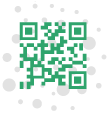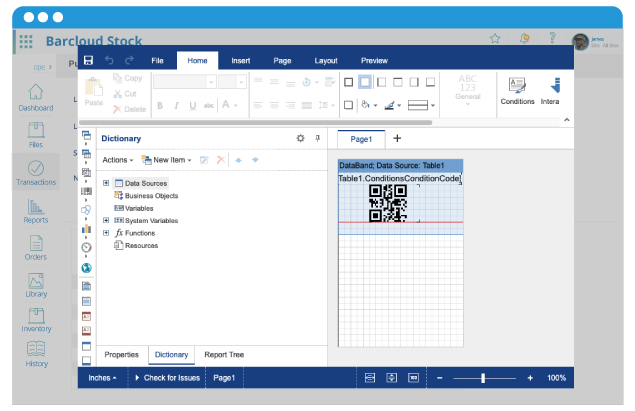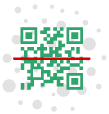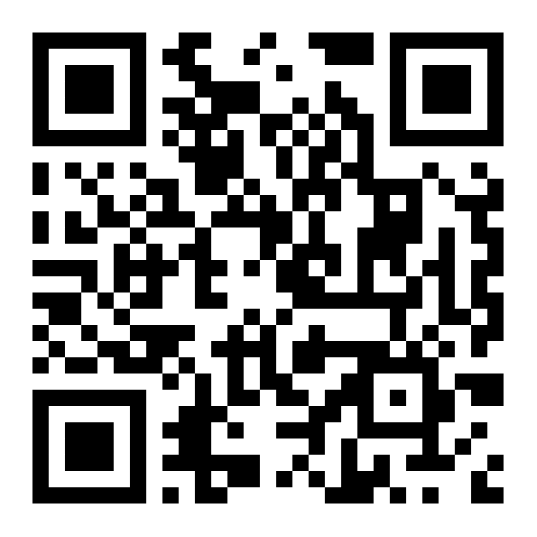Using QR Code Inventory Management and Asset Tracking
Our Inventory Tracking and Asset Management System helps businesses to be more efficient and streamline operations. In our systems, we integrated the use of QR Codes to help with this. With this feature, you can load a large amount of relevant information onto one QR code. Once loaded, users can print it out through our system easily. This can be applied to both assets and inventory.
A QR code can hold much more information than the average barcode, making it easy to share essential information on your items. Anyone can view the necessary information related to your items by just pulling out their phones and scanning the code. There are also many types of QR codes that users can use depending on the situation.
Watch and learn
Take an in-depth look into how the Inventory System and Asset tracking public QR code works and discover:
- The Goal of Public QR Code
- Benefiting Organizations
- Functions of the Public QR Code
- The Organizational Flow

Third-Party Access
Our inventory management and asset tracking feature is friendly to third-party individuals or organizations who do not have access to our system. They need only to scan the QR codes to be able to access published information. This helps streamline operations and makes integrating business operations with third-party warehouses, or other organizations easy and efficient.
However, anyone with a smart device like a phone or tablet will have the ability to scan the QR code. Be sure you only publish the controlled information that is authorized for anyone to view.
QR Codes vs. Barcodes: What’s the Difference?

QR Codes
- Less Secure: Anyone who scans the code will be able to view the information
- More Information: QR codes can hold up to around 7000 characters
- Higher Damage Resistance: QR codes can work past a higher threshold of damage
- More Combinations: By virtue of being 2D rather than 1D, users can create QR code combinations for many different situations.
- Static: Because the information is simply put into a generated QR code, it must be manually updated if anything changes
- More Accessible: Any smart device with a camera can read a QR code

Barcodes
- More secure: Only people with access to our system can view the information
- Less Information: Our standard barcodes can only hold up to 128 characters
- Lower Damage Resistance: Compared to QR codes, barcodes stop working very quickly when damaged
- Less Combinations: Because our standard barcodes are only 1D they have far fewer combinations
- Dynamic: Because barcodes essentially link to a database, they automatically update information in the database changes
- Less Accessible: Only dedicated scanners or smart devices with specialized applications can read barcodes

Configurable QR Codes
On top of storing more information, QR codes are more flexible than most barcode labels. Just like a standard barcode, you can configure your QR codes. Users can determine their size, shape, or density so you can fit them on items that are more difficult to tag.
QR codes provide incredible utility when you’re able to find a legible density. You can fit more information on smaller or larger items than you ever could with a traditional barcode. The only limitation is that the information will always be unclassified. This is opposed to being pulled from a database like barcodes.

Easier to Scan Codes
Another advantage of using QR code inventory management or asset tracking is that QR codes are easy to scan. This is due to their error tolerance. In most cases, QR code readers can still read even labels that are damaged or not stuck on boxes flat.
The durability of QR Codes reduces the time and resources spent on constantly replacing codes when they are damaged or stuck on to boxes incorrectly. Removing this inconvenience results in speeding up operations.
How our Clients use our QR Code for their Inventory System and Asset Tracking Solution
Labeling Perishable Goods

When tracking perishable goods with a QR code, you can hold your phone camera up to the label. The information will load on your device’s screen. The information could be the source of the goods or the expiration date etc.
Tracking Batch/Lot Numbers

When tracking your Batch/Lot stock items like medicine, you can input information like the date it was created. You can also include the batch or lot number, who created it, and more. This makes recalls and maintaining accountability easy.
Returning Misplaced Assets

If someone finds an asset in the wrong place, they can use their phone to rectify it. Scanning the QR code will show where that asset should be and return it to its designated location.
Labeling Boxes

For boxes filled with inventory or assets, you can put a QR code on the box. This easily includes information like which inventory or assets the box contains, the quantity of those items, and more.


